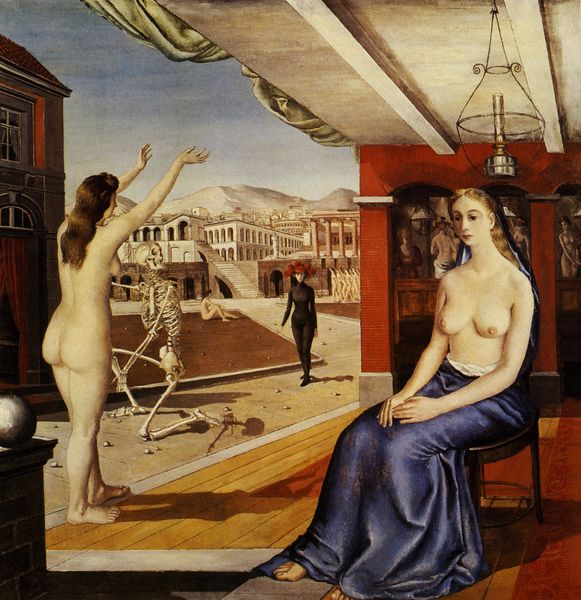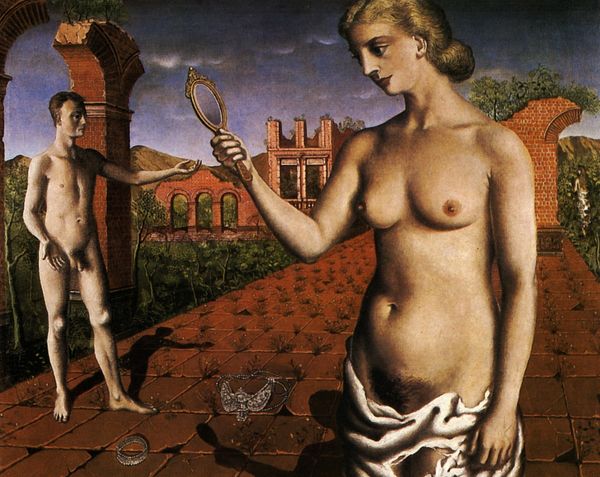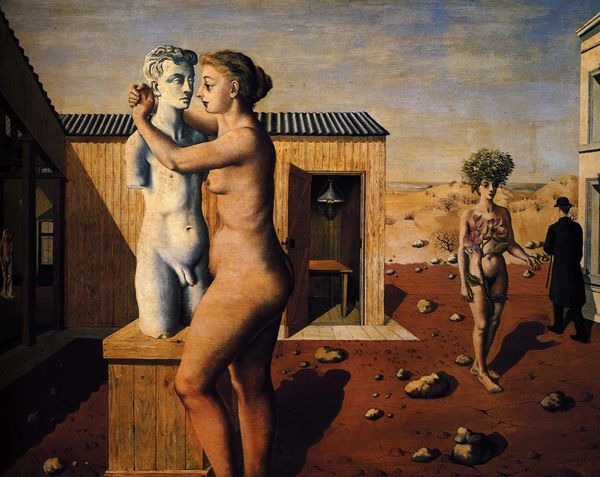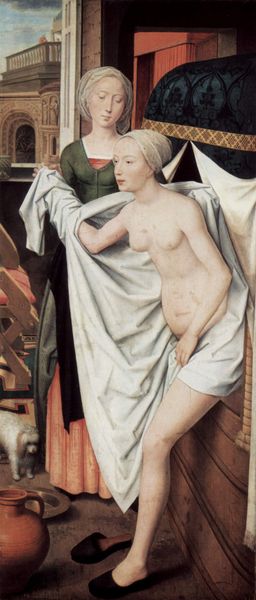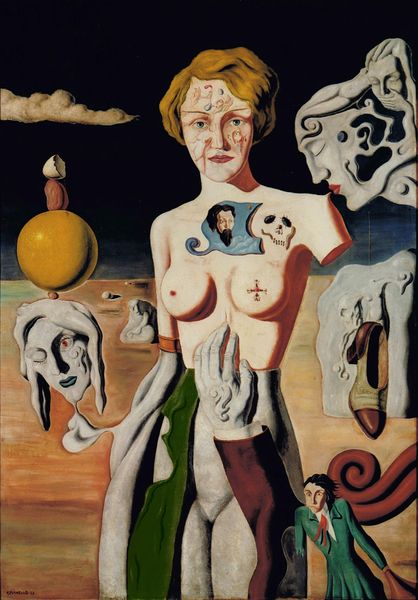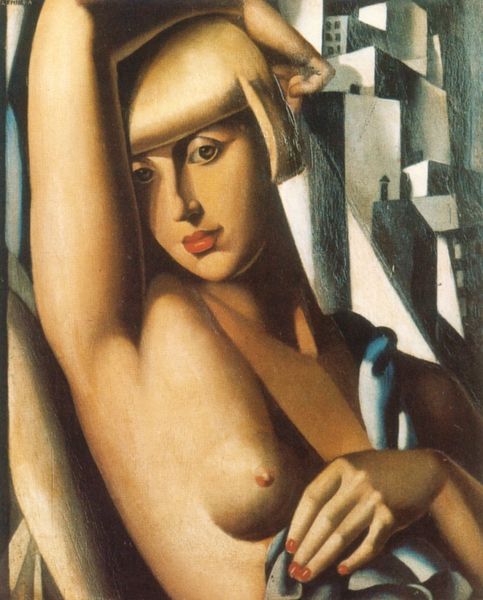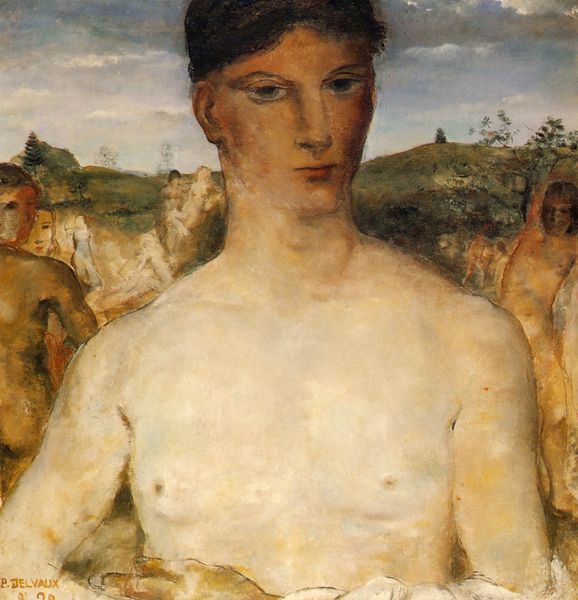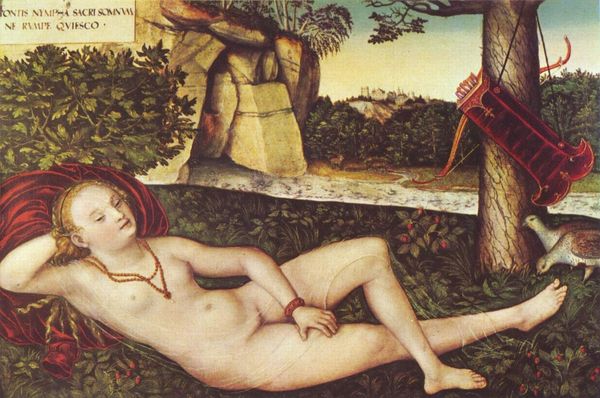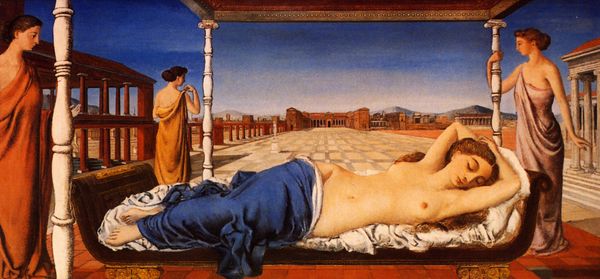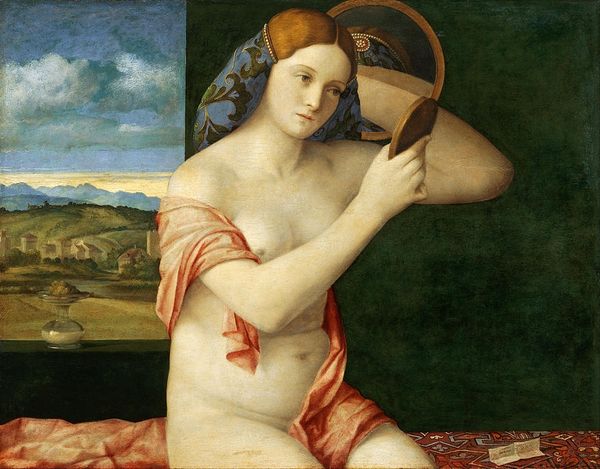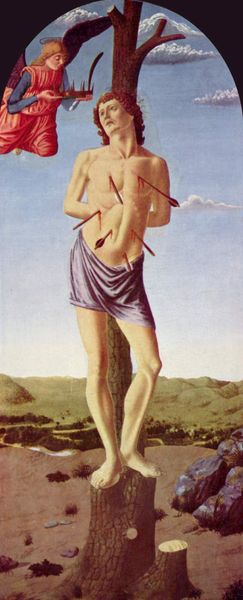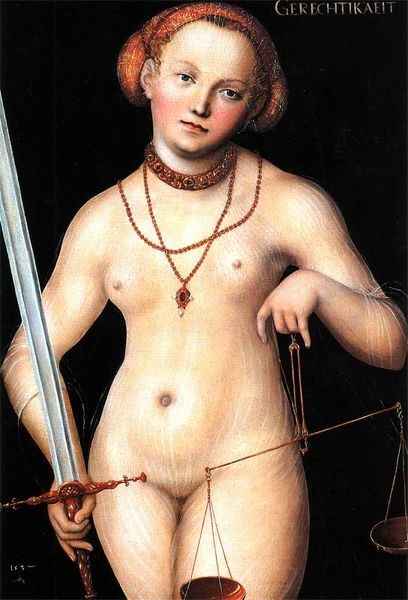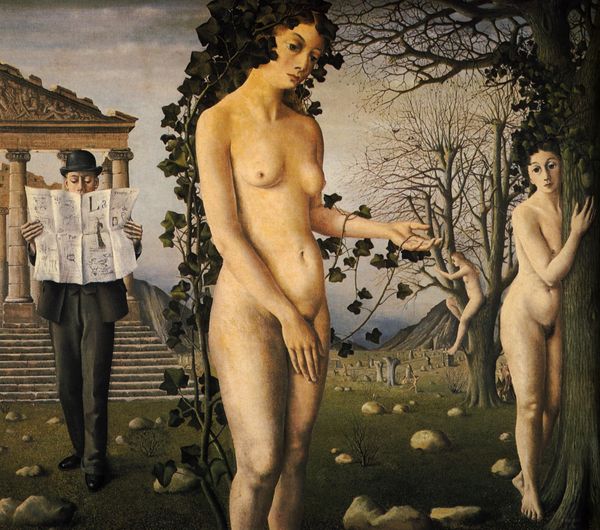
painting, oil-paint
#
portrait
#
painting
#
oil-paint
#
landscape
#
figuration
#
oil painting
#
history-painting
#
nude
#
surrealism
#
portrait art
#
male-nude
Dimensions: 70 x 80 cm
Copyright: Paul Delvaux,Fair Use
Editor: This is Paul Delvaux's "Narrator" from 1937, an oil painting that's just... strange. There's a figure holding out his hand, and another nude figure in the background with open arches… It has an otherworldly feel. How do you interpret this work? Curator: The “Narrator”, painted on the eve of World War II, speaks volumes about the anxieties simmering beneath the surface of European society at the time. What appears "strange" to us now, could have felt eerily familiar for contemporary audiences as looming instability found outlet in art. Does the juxtaposition of these classical nude figures amidst crumbling architecture remind you of anything? Editor: Sort of… like the world is crumbling around them and they're…oblivious? Is it about ignorance of a world at risk? Curator: It's more complicated. The nude figure, traditionally associated with freedom and the idealized form in art history, now seems strangely displaced in Delvaux's surrealist landscape. What’s implied when we consider the rise of fascist ideologies and the suppression of individual expression occurring parallel to Delvaux making art like this? Editor: So it’s about lost freedom of expression in a politically chaotic landscape? And how classical ideals are being threatened? Curator: Precisely. Think of surrealism in the 1930s not just as an avant-garde movement exploring the unconscious, but as a form of political dissent when authoritarian regimes enforced rigid artistic doctrines. Delvaux uses a dreamlike scene as his own form of resistance. Editor: I hadn’t considered that the 'strange' feeling was political! It’s like a quiet scream about the dangers of censorship. Thanks! Curator: Art gives us a safe space to dissect the past. Let us continue this work and make these interpretations available to larger audience, using art as an educational platform.
Comments
No comments
Be the first to comment and join the conversation on the ultimate creative platform.
